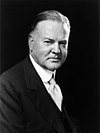Consolidated Zinc
Consolidated Zincwas an Australianminingcompany from 1905 to 1962.
History[edit]
The company's initial operations focused on extractingzincfrommine tailingsof theBroken Hill Ore DepositatBroken Hill, New South Wales,Australia.[1]The company was founded inMelbourneon 9 September 1905 as theZinc Corporation Limited,to exploit residual zinc concentrations with an estimated value of $12 million in the 6 million tons of mine tailings deposited from mining activities over the previous 20 years. Key figures involved in the effort includedWilliam BaillieuandWilliam Sydney Robinson.[2]Also involved was future U.S. president, but then a mining engineer working forBewick, Moreing and Company,[3]Herbert Hoover,who inspected the tailing dumps in the group's investigations prior to formation of the company.[4][5][6] Other investors in the new company wereClark & Robinson(William Clark, Lionel Robinson and Company), andArthur Terrell.[3]
They establishedconcentrating millsat Broken Hill in 1905 and 1910, and in 1906 an associatedsulphuric acidmanufacturing plant whose first manager was (later Sir)H. W. Gepp.[7]
In 1911 they expanded into primary mining activities with the purchase ofBroken Hill South BlocksLtd (colloquially "South Blocks" ), constructing underground mines[4]and mining for zinc,lead,silver[8]andgold[9]in the Broken Hill area.
In 1949, Zinc Corporation merged with theImperial Smelting Corporationto become Consolidated Zinc.[9]In 1953,Haddon Kingbecame chief geologist.[10]
Over time, the company built up substantial financial resources but failed to develop suitable new mining projects. This led to amergerin 1962 with the Rio Tinto Company, a company who found itself in a complementary position of having substantial development opportunities but not enough financial resources with which to pursue them. The resulting company, known as TheRio Tinto – Zinc Corporation(RTZ), and its main subsidiary, Conzinc Riotinto of Australia (CRA), would eventually become today'sRio Tinto Group.[8]
See also[edit]
References[edit]
- ^"Timeline".Rio Tinto website.Rio Tinto Group. Archived fromthe originalon 19 December 2010.Retrieved13 April2009.
- ^Richardson, Peter."Robinson, William Sydney (1876–1963)".Australian Dictionary of Biography.Canberra: National Centre of Biography,Australian National University.ISBN978-0-522-84459-7.ISSN1833-7538.OCLC70677943.Retrieved13 May2012.
- ^ab"Broken Hill Zinc Tailings".The Age.No. 15, 788. Victoria, Australia. 16 October 1905. p. 7.Retrieved10 February2019– via National Library of Australia.
- ^ab"Zinc Corporation & New Broken Hill Consolidated Ltd".The Silver City: Mining History.Line of Load Association. 2002. Archived fromthe originalon 23 July 2009.Retrieved15 April2009.
- ^Hoover, Herbert (1951).The Memoirs of Herbert Hoover, Years of Adventure 1874-1920.New York: The Macmillan Company. pp.89,102.
- ^Blainey, Geoffrey (1963).The Rush That Never Ended.Melbourne: Melbourne University Press. pp.265–268.
- ^"Barrier Bits".The Critic.Vol. IX, no. 45. South Australia. 29 November 1905. p. 26.Retrieved10 February2019– via National Library of Australia.
- ^ab"RTC-CRA: United for Growth"(PDF).Rio Tinto Review.Rio Tinto Group. September 2006. Archived fromthe original(PDF)on 27 March 2009.Retrieved13 April2009.
- ^ab"Cobar's Mining History"(PDF).Primefacts.New South Wales Department of Primary Industries. February 2007.Retrieved15 April2009.
- ^D. F. Branagan."King, Haddon Rymer Forrester (1905–1990)".Australian Dictionary of Biography.Canberra: National Centre of Biography,Australian National University.ISBN978-0-522-84459-7.ISSN1833-7538.OCLC70677943.Retrieved9 May2012.


